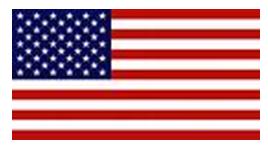CoolPix: Jimmy Doolittle And The Gee Bee R-1 Race Past The Bendix Pylon! (1932)
 Tuesday, April 2, 2013 at 08:41PM
Tuesday, April 2, 2013 at 08:41PM  (click pic for hi-res) The iconic Gee Bee R-1 at 1932 Cleveland National Air Races
(click pic for hi-res) The iconic Gee Bee R-1 at 1932 Cleveland National Air Races
(check out the Gee Bee category on AirPigz)
This is actually a picture of a picture... the enlarged photograph is on the wall at the National Air and Space Museum in Washington DC and I captured a picture of that photograph during the NASM AirPigz MeetUp back in late January 2013. I was spending quite a bit of time channeling Howard Hughes in the presence of the Hughes H-1 racer, and this photograph was on the wall nearby along with other interesting items from the golden age of air racing. I went ahead and took the pic knowing that one day I'd wanna post it here. I really like how the off-center Gee Bee helps relate the speed that the racer was traveling - probably around 250 mph, but maybe more. Be sure to click this CoolPix to open it up hi-res.
There's a similar picture viewable on the net (sample here) but it shows Jimmy and the Gee Bee going from left to right. After studying the two pix a bit I realized that the signboard in the pic here says 'Event L Lap' while the other pic says 'Event R Lap'. I haven't done the research to know for sure what that means, but I would assume that, for whatever reason, the airplane was flying the race course in opposite directions. One of these days I'll take the time to understand the meaning... but for now I'm content just imagining what it would have been like to be there in person (and in color) as this amazing aircraft and amazing pilot ripped a streak in the Cleveland sky. Seriously, if you do more than just look at this image, if you make a specific effort you can let your mind take you back to 1932 and a world that is so far away from the one we live in today. And yet there they were, less than 30 years after the Wright Brothers, and the Granville Brothers had a race airplane that could easily exceed 250 mph. (Jimmy set a world speed record in the Shell Speed Dash during the 1932 races of 296 mph!)
So there you have it, my Gee Bee obsession remains intact. More to come : )
 Martt |
Martt |  2 Comments |
2 Comments | 













































































Reader Comments (2)
The photo of the R-1 was indeed at Cleveland in 1932, but not during the Thompson race. Rather, it was taken during the Shell Speed Dash which qualified the aeroplanes and pilots for theThompson. As I'm sure you know, the Shell event was four straight 'dashes' in opposite directions for an average time. There's all kinds of horrible stories about the Gee Bee aeroplanes and most of them total nonsense. They were surely fast and not built for Cub pilots.
This photo was indeed taken during the 4 pass straight line shell speed dash course due to the low altitude required to time and qualify for the Thompson Trophy Race or World Land Plane Speed Record. Doolittle flew the Thompson Trophy Race high and wide for safety reasons avoiding low passes. Due to miscommunication between officials and ground crew, a barograph was not installed to verify the altitude necessary for a world speed record on the first day’s attempt. Doolittle’s average speed was 293.19 mph on that first set of qualifying passes. A second attempt was made on the land speed record with the barograph installed, but failed due to vibrations from the controllable pitch prop breaking fasteners in the engine cowl. The next day, Sept. 1, 1932, Doolittle tried a third time to break the World Land Plane Speed Record but due to high winds and an overheating engine, his average of 282.672 mph came up short of the title by .778 mph. Two days later, Sept. 3, Doolittle made a fourth attempt on the title with an oil cooler installed and as June I. Granville writes in her book "Farmers Take Flight", the "prop was reworked". It is my opinion that the controllable pitch prop was changed in favor of a manual ground adjustable prop. I conclude this by viewing pictures of the Gee Bee R1 upon arrival in Cleveland and pictures taken after the Thompson Trophy Race. I would surmise that this photo was during speed attempt four due to the absence of the controllable prop and the fact that the “Thompson” race was run in the opposite direction in relation to the Bendix scoring pylon in the photo. On this fourth attempt Doolittle ran the speed course 6 times and was allowed by officials to pick any 4 consecutive passes. Doolittle choose laps 2 through 5, averaging 296.287 mph. Pass 3 was the fastest at 309.040 and the slowest being pass 4 at 281.965 mph. Consequently, the speed attained in this photo should be no less than that of pass 4.